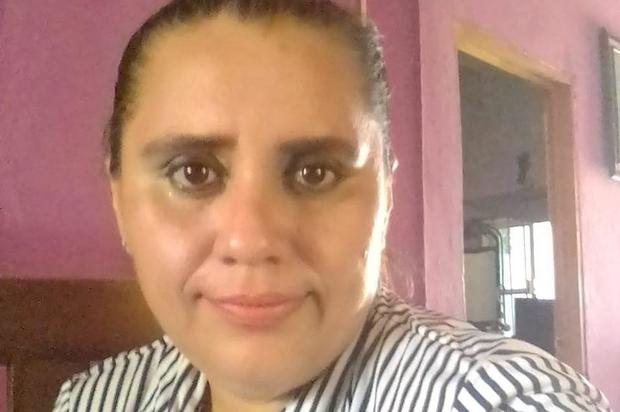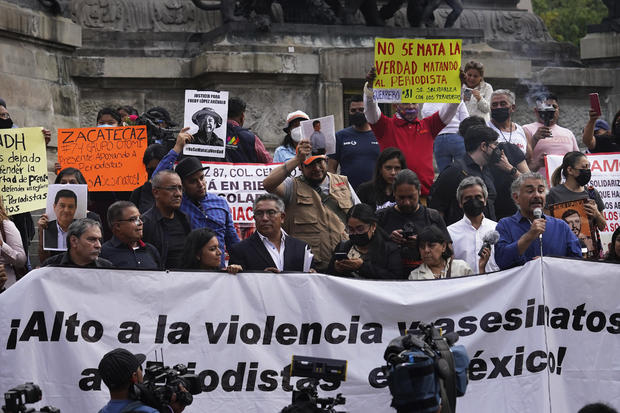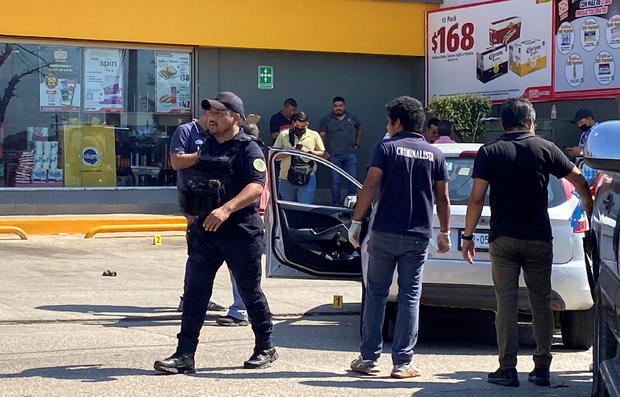Journalists Yessenia Mollinedo and Sheila Garcia shot dead in Mexico, becoming 10th and 11th reporters killed in country this year
Garcia #Garcia

Just as Mexican journalists prepared to protest the killing of a journalist last week, word came Monday that two more were shot to death in the Gulf coast state of Veracruz, raising to 11 the number of such killings in the country this year.
The Veracruz State Prosecutor’s Office said via Twitter that it was investigating the killings of Yessenia Mollinedo Falconi and Sheila Johana García Olivera, the director and a reporter, respectively, of the online news site El Veraz in Cosoleacaque.
Veracruz State Prosecutor Verónica Hernández Giadáns said the investigation would be exhaustive, including considering their journalism work as a possible motive in their killing.
The State Commission for Attention to and Protection of Journalists said the two women were attacked outside a convenience store.
“We condemn this attack on Veracruz’s journalism profession, give it prompt monitoring and have opened an investigation,” the commission said.
 Yesenia Mollinedo Falconi, a journalist who was murdered in Veracruz, Mexico, is seen in this picture released on April 13, 2022 and obtained from social media. FACEBOOK YESENIA MOLLINEDO FALCO via Reuters
Yesenia Mollinedo Falconi, a journalist who was murdered in Veracruz, Mexico, is seen in this picture released on April 13, 2022 and obtained from social media. FACEBOOK YESENIA MOLLINEDO FALCO via Reuters
Their killings came on the heels of the ninth slaying of journalist this year, in the northern state of Sinaloa. Prosecutors there said Thursday that the body of Luis Enrique Ramírez Ramos was found on a dirt road near a junkyard in the state capital, Culiacan.
Prosecutors said that his body was wrapped in black plastic and that he died from multiple blows to the head.
Ramírez Ramos’ news website, “Fuentes Fidedignas,” or “Reliable Sources,” said that he had been abducted near his house hours earlier.
The dizzying pace of killings has made Mexico the deadliest country for journalists to work outside of war zones this year.
On Monday evening, Griselda Triana, wife of Javier Valdez, a journalist slain in 2017, spoke to some 200 journalists gathered at Mexico City’s Angel of Independence monument. The demonstration had originally been scheduled to protest the killing of Ramírez Ramos and those who preceded him.
 Journalists protest to draw attention to the latest wave of journalist killings, at the Angel of Independence monument in Mexico City, Monday, May 9, 2022. Marco Ugarte / AP
Journalists protest to draw attention to the latest wave of journalist killings, at the Angel of Independence monument in Mexico City, Monday, May 9, 2022. Marco Ugarte / AP
Valdez, one of Mexico’s best-known journalists killed in recent years, was an award-winning reporter who specialized in covering drug trafficking and organized crime in the northern state of Sinaloa.
“In all this time I haven’t stopped thinking about how easy it is for them to kill a journalist in Mexico,” Triana said. “I feel hurt each time they take the life of so many colleagues.”
“There’s so much anger, indignation, powerlessness knowing that we come here to protest the murder of Luis Enrique Ramírez, (that happened) a few days ago in Culiacan, Sinaloa, and the news of the killing of two women journalists in Veracruz reaches us here,” Triana said. “It’s a whirlpool. The crimes against freedom of expression keep occurring every day. We shouldn’t tolerate it. We have the authority to ask the authorities to put a stop to this slaughter of journalists.”
The victims, like those killed Monday, are most often from small, hyperlocal news outlets. El Veraz operated a Facebook page and appeared to almost exclusively post notices about events or public information from the municipality’s government. El Veraz’s motto was “Journalism with Humanity.”
The phone number listed for El Veraz rang to what appeared to be Mollinedo Falconi’s cell phone, according to its message.
 Police and forensic technicians work at the crime scene where journalists Yessenia Mollinedo and Sheila Garcia were shot dead by unidentified gunmen, in the municipality of Cosoleacaque, in the eastern state of Veracruz, Mexico, on May 9, 2022. STRINGER / REUTERS
Police and forensic technicians work at the crime scene where journalists Yessenia Mollinedo and Sheila Garcia were shot dead by unidentified gunmen, in the municipality of Cosoleacaque, in the eastern state of Veracruz, Mexico, on May 9, 2022. STRINGER / REUTERS
Cosoleacaque is just off a major east-west route in southeastern Veracruz. Organized crime is present in the area and involved especially in migrant smuggling, but there was no immediate indication of who could have been responsible.
Veracruz Gov. Cuitláhuac García said a search was underway for those responsible.
“We will find the perpetrators of this crime, there will be justice and there will not be impunity like we have said and done in other cases,” García said via Twitter.
Journalists had already scheduled a demonstration for Monday in Mexico City to protest killings of their colleagues, most recently that of Ramírez Ramos in Sinaloa.
Mexico’s state and federal governments have been criticized for neither preventing the killings nor investigating them sufficiently.
While organized crime is often involved in journalist killings, small town officials or politicians with political or criminal motivations are often suspects as well. Journalists running small news outlets in Mexico’s interior are easy targets.
Mexico has a protection program for journalists and human rights defenders, but it was not immediately known whether either Mollinedo Falconi or García Olivera were enrolled.
Participants receive support, such as electronic devices or “panic buttons” to alert the authorities to any threat; surveillance systems in their homes; even bodyguards in some cases. Often authorities recommend that threatened journalists move to another state or the capital to lessen the threat, but that means separating them from their work, livelihood and families.
While President Andrés Manuel López Obrador has promised a “zero impunity” program to investigate such slayings, journalists’ murders, like most homicides in Mexico, are never resolved by authorities. López Obrador has also kept up his regular verbal attacks on journalists critical of his administration.
In February, the Inter American Press Association called on the president to “immediately suspend the aggressions and insults, because such attacks from the top of power encourage violence against the press.”
In March, the European Union approved a resolution that “calls on the authorities, and in particular the highest ones, to refrain from issuing any communication which could stigmatize human rights defenders, journalists and media workers, exacerbate the atmosphere against them or distort their lines of investigation.”
Late Monday, presidential spokesman Jesús Ramírez said via Twitter that the federal and state governments would work together to investigate the killings. “The commitment is that there is not impunity.”
Other journalists killed in 2022
In March, prosecutors in the western state of Michoacan said reporter Armando Linares was shot to death at a home in the town of Zitacuaro. His killing came six weeks after the slaying of a colleague, Roberto Toledo, from the same outlet, Monitor Michoacan. It was Linares who announced Toledo’s death Jan. 31 in a video posted to social media.
In early March, gunmen killed Juan Carlos Muñiz, who covered crime for the online news site Testigo Minero in the state of Zacatecas.
Jorge Camero, the director of an online news site who was until recently a municipal worker in the northern state of Sonora, was killed in late February.
In early February, Heber López, director of the online news site Noticias Web, was shot to death in the southern state of Oaxaca.
Reporter Lourdes Maldonado López was found shot to death inside her car in Tijuana on Jan. 23. In a news conference in 2019, Maldonado Lopez told Mexico’s president she feared for her life.
Reporter José Luis Gamboa was killed in the Gulf coast state of Veracruz on Jan. 10.
Crime photographer Margarito Martínez was gunned down outside his Tijuana home on Jan. 17. Guillermo Arias, whose photographs chronicle life and death in the streets of Tijuana, worked with Martinez for many years.
He recalled the painful experience of covering the murder of his friend and fellow journalist.
“His daughter arrived and asked me not to photograph her dad’s body,” Arias told CBS News.